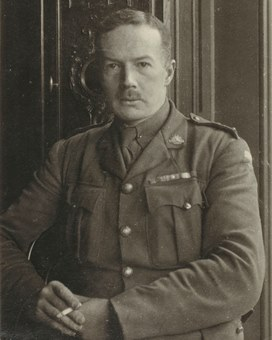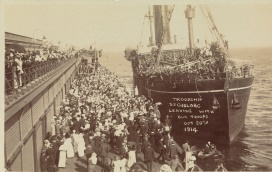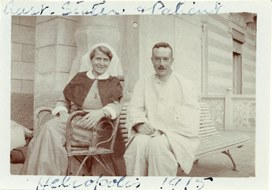Soldier, leader, sportsman

Lieutenant Colonel Charles Hazell Elliott is an important figure in the history of Australian involvement in World War 1. He has a comprehensive biography on the Australian Dictionary of Biography (ADB), a profile on the Australian War Memorial site as well as extensive mentions in the official history of The Story of the Twelfth.
War
He enlisted in the Australian Imperial Force on the 14 August 1914. On the 20th of October he embarked as Captain in command of ‘A’ company, 12th Battalion.
After arriving in Egypt he worked with his men to prepare for war. In his collection of notes on the 12th Battalion he says:
“Here a rigorous course of training was instituted under conditions which were very trying, which tested to the full the endurance of the men. They had a march daily of some two miles to their training ground, going in full marching order, carrying heavy packs, under a burning sun and with penetrating sand blowing on to them, causing much chafing and discomfort…At the end of February, preparations were made for the Gallipoli Campaign – although all that the men who were to take part in it knew was that they were to prepare themselves for a journey, and that some kind of adventure was in front of them.”

Promoted to Major before leaving Egypt, he landed at Gallipoli on the 25th of April 1915.
Within hours of the landing his commanding officer Colonel L. F. Clarke was killed, his second in charge Lieutenant-Colonel S. Hawley was wounded and Major Elliott took command of the 12th Battalion. The Story of the Twelfth p.43 describes this awful situation:
“…Colonel [Clarke] took out his message book and commenced writing a report to Brigade Headquarters when he was shot through the heart. His batman rushed over to his assistance, but had barely reached him when he became the second victim of the Turkish sniper. Pvt Moggridge, an old South African campaigner, noticed that the spot where they had fallen was on a well-worn track, and warned everyone clear of it. Major Elliott, however, who had heard of the calamity but not Moggridge’s warning, came up to take over command and became the third casualty, being wounded through the shoulder and receiving a fracture of the left arm. He quickly appreciated the situation and told no one to come near him, and himself waited an opportunity before crawling away from this danger spot.”
After being treated in the field he was sent to England to recover from his injury.
He returned to Gallipoli in September where he was temporarily promoted to the rank of Lieutenant Colonel in charge of the 12th Battalion, a rank that was confirmed on the 1st March 1916. It must have been around this time when he was sent this postcard from we think his future wife Sister Alice Gordon King.
It says in part:

“Have no idea where you are but someone said you were at Gallipoli…Am on my way to England…If you get the bullet again label yourself no 10 Aust Gen Hosp England…Thanks very much for letters & photos sent have received all but did not know where to write…”
Elliott left Egypt on the 29th of March 1916 for the Western Front. He fought in some of the most famous engagements in France: Pozieres, Mouquet Farm as part of the Battle of the Somme, Hill 60, Polygon Wood and many others. Elliott was a courageous soldier and commander who was popular with his men. He was awarded the Distinguished Service Order (DSO) in 1917 and a Bar was added to it in June for his action at Lagincourt.
An extensive list of his military honours and awards can be found by searching The Australian War Memorial here.
Elliott was promoted to the temporary rank of Colonel in 1922 , Commander of the 2nd Battalion, 40th Infantry Regiment, AMF in 1920 and the 12th Infantry Brigade in 1922. (Quinn 2015)
Later life
Elliott married Sister Alice Gordon King during the war on the 20 December 1917 in London. Alice was a sister in the Australian Army Nursing Service and their only child Charles Gordon Elliott was born in 1925.
After the war he returned to his work as a cashier and eventually a claims officer at the AMP Society. He was always a keen sportsman holding senior positions in several clubs including the Hobart Harrier Club, the Tasmanian Amateur Athletic Association and Boxing associations and the Derwent Rowing Club.
He passed away at his home in New Town, Hobart on the 27th of April 1956.
Select bibliography
Rodney K. Quinn, ‘Elliott, Charles Hazell (1882–1956)’, Australian Dictionary of Biography, National Centre of Biography, Australian National University, accessed online 27 March 2015.

